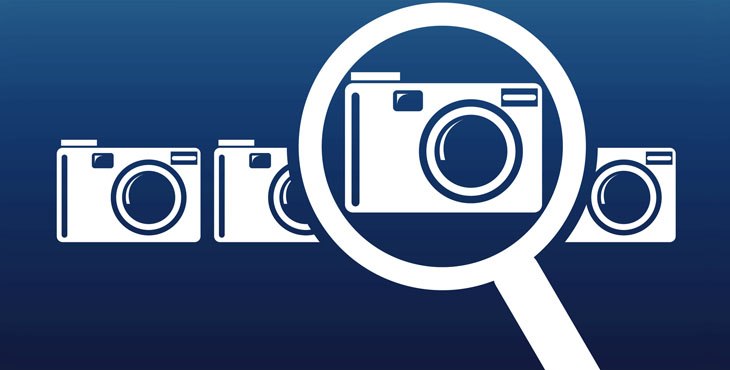Love may be universal, but weddings are anything but. From the color of the bride’s attire to the pre-wedding festivities, wedding traditions vary based on culture, religion, geography and even the bride and groom’s unique personalities. While American brides wear white, brides from India favor bold colors like red. Just like the color of the bride’s dress varies between cultures, the tones in the image should also reflect that couple’s unique special day.
When it comes to wedding photography, keeping traditions in-tact is essential — just how a wedding is photographed will change based on the traditions the bride and groom choose to participate in. So how should wedding photographers handle a wedding that is a mix of different traditions? Here are 12 tips for photographers photographing weddings across multiple cultures and traditions while keeping both the joy and the tradition of the ceremony intact.
Culture and Ethnicity
The bride and groom’s culture, ethnicity and family history often influence the choices they make when planning their wedding day. Those choices, in turn, will affect how the photographer captures the wedding day, from what is photographed to even the exposure settings. A wedding full of reds and purples, for example, may be shot differently than a white wedding.
1) Check with the bride and groom ahead of time about any cultural traditions that may be different from weddings that you’ve shot before. If you don’t meet with the bride and groom in-person, make sure to ask on a questionnaire or in other forms of communication what traditions will be part of the ceremony. If you’re uncomfortable shooting a new tradition, ask if it’s possible to shoot the wedding rehearsal.
2) Watch the exposure on the bride’s dress. White is easy to overexpose, which looses all the fine detail in the bride’s dress for weddings that follow American and European traditions. Weddings where the bride is in full color also need to be properly adjusted to represent the true color, not overly saturated. When you check your exposure, check both the exposure on the face and the dress.
3) Don’t forget the details. Those close-up detail shots are musts for the wedding albums — make sure to find out which details to shoot if you are shooting a cultural wedding different from your own. Since traditions differ, those close-ups can differ too.
Geography and Location
Where the wedding takes place matters too. Weddings from Africa are going to look different than weddings from North America — and not just because those areas tend to have cultural differences. Along with the differences between wedding traditions, geography plays a role in the color and composition of a photograph, all which plays a role in the photo editing process.
4) If you are shooting a destination wedding, make sure you’re familiar with the area’s geography and how that might influence the photos. For example, the bride and groom in one part of the world may choose to take photos in a lush green park, couples from another area may choose a mountainous scene while another may choose to shoot in a desert A photograph with snow, for example, is shot a bit differently than a photograph full of green grass to preserve the original scene, since snow can cause a shot to be under or overexposed based on the camera meter alone.
5) Regardless of whether you are traveling or shooting in your hometown, make sure to check whether the ceremony is being held indoors or outdoors since both situations have vastly different lighting. If you can, visit the site ahead of time or at the very least, research the venue online.
Religious Wedding Traditions
Before photographing a wedding, a photographer should always be familiar with any religious preferences for the couple — you don’t want to be like the photographers that are scolded mid-ceremony for not understanding the traditions.
6) Always talk to the officials ahead of time. Ask if there are any limitations to where you can shoot from, as well as any other limitations, such as using flash. For example, in some denominations, you may be asked to stay in a certain spot during the entire ceremony, or you may be asked not to approach the area around the altar.
7) Get a ceremony order of events ahead of time. Knowing what is going to happen when and where will help make sure you are ready to capture every unique part of the couple’s ceremony.
8) Ask how long the ceremony will be — don’t get caught off-guard expecting a two-hour Catholic wedding with lots of chances to shoot a variety when the couple instead opted for a short 20-minute
Modern Weddings
Some brides and grooms choose to mesh traditions and practices from different cultures — or to create their unique way of celebrating their union as husband and wife. Modern weddings present a number of different challenges for photographers, like guests trying to take their pictures.
9) Ask the bride and groom ahead of time if their wedding day includes new or unusual traditions. You don’t want to miss the fact that the unity candle was instead a knot tying ceremony. At the same time, if a bride finds an actual old sixpence for her shoe, you’ll want to include that in the detail shots too. Photographers can’t-do that if they don’t ask which traditions are part of the big day.
10) Find a balance between getting the best shots and being rude to the guests. If a family member is wrecking the shots with a flash, kindly ask them to shoot without a flash, explaining that the bride and groom will get better professional photos that way.
Non-Traditional Weddings and Adventure Weddings
Weddings aren’t always held in churches. A new trend towards adventure photography has bride and groom saying their vows in exciting locations on mountaintops, cliff-sides or after hiking through the desserts. Adventure weddings often present unique challenges to photographers, since instead of churches and ballrooms, the locations can feature mountain peaks and bright blue skies, snowy scenes or even vows under the stars.
11) Make sure you are ready for the adventure. Sure there’s a first time for everything, but if a bride and groom ask you to shoot their wedding for the stars, you should shoot the stars before the actual wedding day. Try to get as close as possible to the conditions of the actual wedding and practice getting it right — as well as what gear you’ll need, from hiking boots to actual camera gear.
12) Always talk with the bride and groom ahead of time so that the expectations aren’t above what’s even possible. Go over all the details, even the seemingly insignificant ones, and make sure there’s a backup for inclement weather.
Every wedding is different, which means photographers need to adjust their approach to each wedding they shoot, especially when shooting weddings with different cultures and traditions. In the same way, there is no one-click wedding photo editing solution that will instantly turn every photo into its best version. That’s why Smart Photo Editors takes a unique approach to every wedding, editing not with boring, overused presets but with tools considering every shot’s unique aspects. From colorful wedding dresses and crowns to long white gowns and veils, Smart Photo Editors can make every shot the best reflection of that couple’s unique celebration.
– SmartPHOTOeditors

